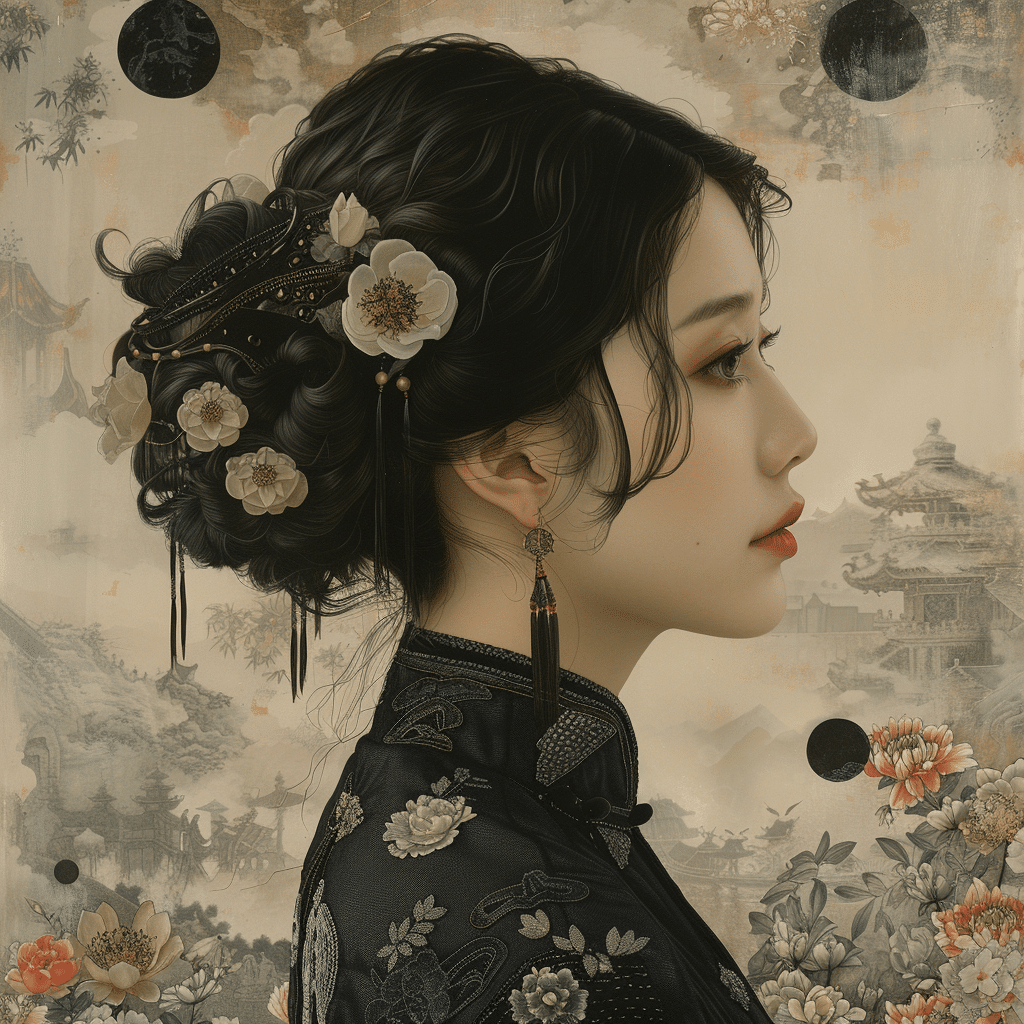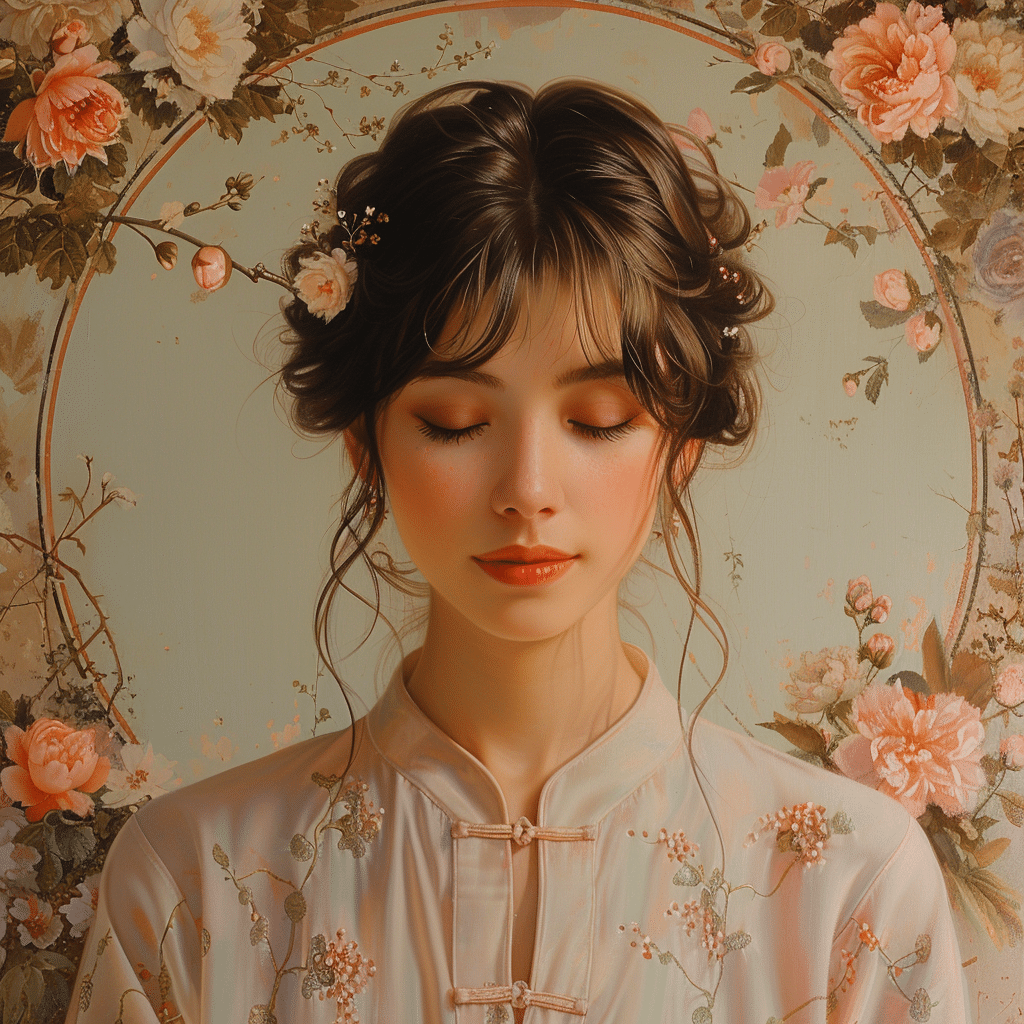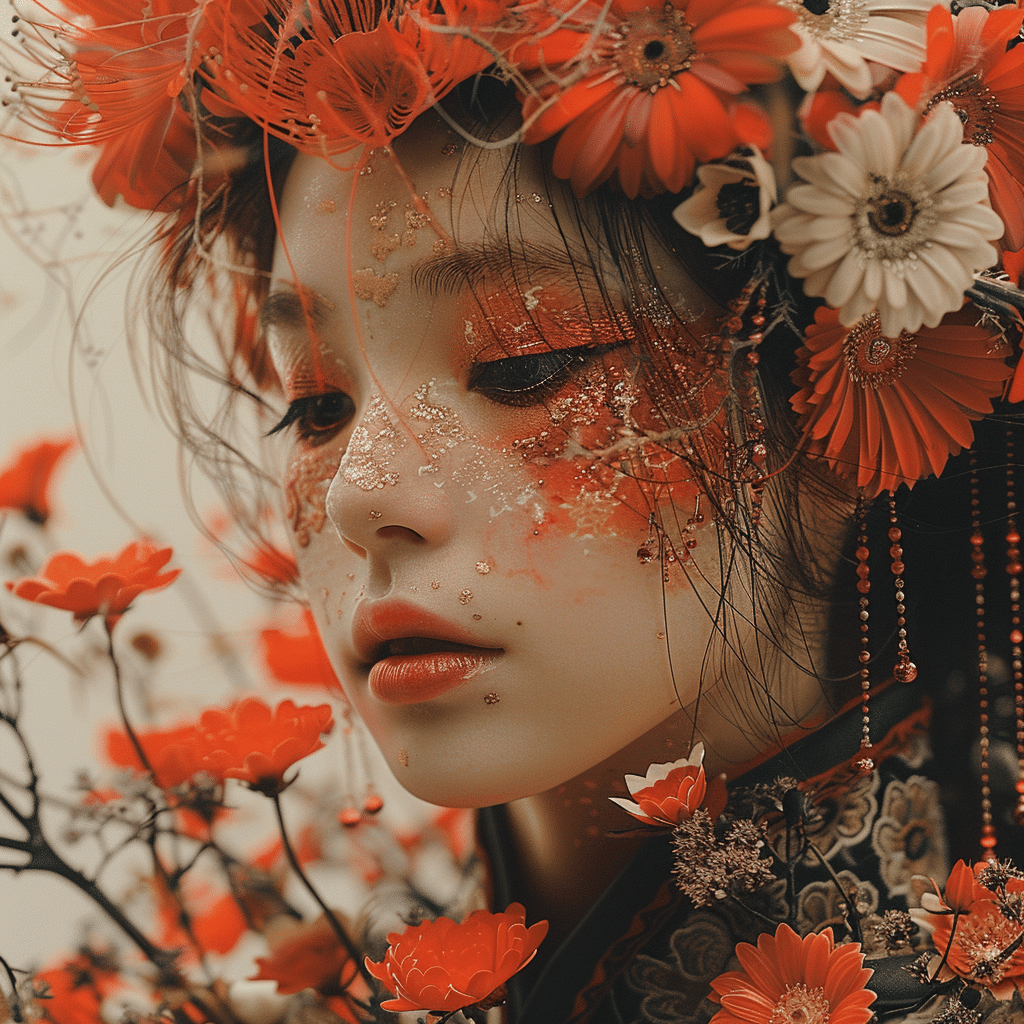In the ever-expanding universe of anime, a glittering constellation often gets lost in the shuffle – josei anime. But what exactly does ‘josei meaning’ entail in the colorful world of Japanese animation? Oh, strap in, folks! We’re about to dive deep into the realm where grown women find their animated reflections praised for their complexity and realness.
Unpacking the Josei Meaning in Today’s Anime Landscape
The Definition of Josei in the World of Japanese Animation
Let’s cut to the chase, shall we? The term ‘josei,’ which quite literally translates to ‘women’ in Japanese, is the secret password into a garden of anime and manga designed with the 16 to 40-year-old woman in mind. Unlike its younger sis shoujo, which spins tales for preteens, josei plants its roots in the soil of adulthood, blossoming with stories that give a nod to the layered lives of its audience. Think less ‘first crush’ giggles and more ‘which wine pairs with this quarter-life crisis’ conundrums.
How Josei Manga Paved the Way for Grown Women in Anime
Backtrack to the origins, and you’ll see that josei manga is the blueprint, the sacred text from which the animated world draws inspiration. From the haunting romance of Paradise Kiss to the raw edges of Nana – tales that illustrate love’s scars as much as its beauty – josei manga has etched a special place in the heart of its audience. It chronicles the triumphs and tribulations of women wading through the waters of career-building and complex relationships.

Gatcha! The Impact of Mobile Gaming on Josei Content
Exploring the Rise of Female-Centric Gacha Games
Hold onto your smartphones, ladies, because the gatcha phenomenon has caught the josei wave and is riding it all the way to the bank! Gacha games like Lucy Cyberpunk Edgerunners have figured out that women want more than just a casual flirtation with fantasy – they want a grand love affair. They’ve intertwined juicy josei narratives with the tantalizing allure of gacha mechanics, roping in fans for a wild gaming experience.
How Gacha Games Are Broadening the Josei Experience
The titles integrating gacha are no mere diversions; they’ve become crucial to the josei meaning, enriching stories through daily, interactive slices of drama. Just ask the fans rallying around characters like Maki Oze, who amplify these experiences with their multi-dimensional vividness. These games aren’t just complementing the narrative – they’ve become the narrative.
| Aspect | Description |
|---|---|
| Definition | Josei (女性) is a genre of Japanese manga and anime aimed at adult women, often depicting realistic, mature themes. |
| Origin of Term | The term ‘josei’ translates to “woman” in Japanese, signifying the target demographic of these stories. |
| Age Group Targeted | Primarily aimed at women aged between 16 and 40 years old. |
| Contrast to Shōjo | While shōjo manga targets girls and young women, josei focuses on adult women with more grounded storytelling and complexity. |
| Contrast to Seinen | Seinen manga is directed at young adult and older men with mature and graphic content; josei is its female audience counterpart. |
| Common Themes | Realistic depictions of romantic and personal relationships, career, motherhood, and everyday challenges of adult life. |
| Popular Examples | “Nana” (often mistaken for shōjo due to its publication in Shojo Beat) and “Paradise Kiss” (published in Zipper magazine). |
| Publication Date | Notable increase in josei popularity and publications in the mid-2010s. |
| Cultural Impact | Josei manga and anime contribute to diversifying the representation of women in media and addressing adult female experiences. |
| Noteworthy Point | Despite the classifications, some manga like “Nana” may transgress the usual demographic boundaries due to their thematic depth. |
Sukana and the Subtleties of Josei Romance Tropes
Deciphering Romantic Nuances in Josei Through ‘Sukana’
Let’s talk sukana. This isn’t your cookie-cutter romance trope. In the land of josei, sukana is that slow-burn affection, the simmering connection that evolves into an all-consuming flame that characters and audiences both savor over time.
The Evolution of Sukana in Modern Josei Storytelling
Modern society is ever-changing, and the portrayal of sukana has shape-shifted alongside it. Contemporary josei anime, like the rain-soaked, emotionally potent tales of Juvia from Fairy Tail, wraps its fingers around the pulse of what love and affection mean today – it’s not just about grand gestures but the tiny, significant moments that stitch two souls together.

Bridging Anime and Everyday Life – The Realism of Josei
Examining Life’s Intricacies through Josei Anime and Manga
Josei doesn’t shy away from life’s wrinkles and creases. It sketches out the map of adulthood, complete with guideposts for navigating career snags, heart-tugging relationships, and the quest for personal growth. This is the genre where you find your reflection – not just as a trope but as a fully-formed human baring her truth.
The Portrayal of Empowerment and Self-Discovery in Josei
Empowerment? Self-discovery? Say no more. Josei grabs the baton and races ahead, spotlighting protagonists who aren’t waiting for a knight – because they’re already wearing the armor and slaying the dragons themselves. It’s this glimpse into self-fulfillment that not only adds breadth to the ‘josei meaning’ but offers its audiences a hefty dose of inspiration.
Beyond Entertainment: The Cultural Significance of Josei
Josei’s Role in the Contemporary Discussion of Womanhood
Josei isn’t just entertainment; it’s a cultural catalyst inviting deeper discussions about womanhood in our times. It’s been a stage for a narrative ballet that twirls around femininity, relationships, and the definition of success. It challenges, comforts, and most importantly, it converses with its audience about the ever-evolving dance of gender roles.
The Future of Josei Anime and Manga as a Cultural Beacon
Peering into the future like a fortune-teller at a technicolor fair, one can glimpse a josei landscape evolving into an even richer cultural beacon. With the potential for global influence and cross-cultural fertilization, especially with the perennially popular Andrew Form at the helm of creative endeavors, josei stands poised to eclipse even the traditionally male-dominated territory of seinen. Could the anime character Brittany Elizabeth be the face of this transformation? Only time will tell.
Woven into the very fabric of the ‘josei meaning’ is the recognition that these stories of grown women culminate in a unique blend of grit and grace. The verve with which josei manga, anime, and games like gacha evolve in synergy with their audience’s lives is a testament to the genre’s vitality. Everyday moments are immortalized, emotional odysseys honored, and the imaginations of women around the globe are ignited. Through its indomitable spirit and honest narrative, josei continues to stand as a storytelling powerhouse for the mature woman, reflecting and championing her voice long after the screen fades to black and the last page is turned.
Exploring the Rich Tapestry of Josei Meaning in Anime
Josei anime, a genre known for its appeal to adult women, is like a trip to Easton Maryland, full of unexpected delights and charming experiences. Not unlike a mature and sophisticated novel, josei meaning translates to tales that often delve deeper into emotional subtleties and complex relationships than their shoujo counterparts. It’s where the narrative can shift from the whimsical flutter of first love to the intricate portrayal of a woman’s journey in the workplace or her navigation through family life. Josei anime doesn’t shy away from life’s less glossy aspects, bearing a resemblance to American Horror story season 12, with its raw and thought-provoking content, albeit with less of the supernatural flair.
Within the quirky canvas of animation, josei characters stand out with multi-dimensional personalities. Take Juvia from Fairy Tail, for instance. Though part of a shonen anime, Juvia’s multifaceted character arc, with its nuanced exploration of love and identity, could very well fit into the josei narrative. Meanwhile, if we venture into the heartfelt realm of Makomo from Demon Slayer, her poignant backstory and the emotional resonance of her character would not feel out of place in a josei title. These characters embody a depth and realism that magnetically draw in the mature audience.
Juggling realism with fiction, josei series aren’t afraid to explore the more practical side of life that’s as variable as finding the right latex free Condoms. The stories recognize the maturity of their audience, speaking directly to their experiences without sugarcoating the complexities of adulthood. In essence, josei meaning taps into the unsung symphony of grown women’s lives, offering a slate of stories that are relatable, empowering, and unreservedly human. The harmony between characters’ personal growth and the relatable plotlines is what makes josei anime a unique gem in the animation crown, a genre that deserves applause for its candid portrayal of womanhood.

What is josei vs shoujo?
What is josei vs shoujo?
Well, talk about a mix-up that’s as confusing as a foreign menu! Simply put, josei anime is like the older, more sophisticated sister of shoujo. You see, ‘josei’ literally means ‘women’ in Japanese, and these stories are for the grown-up crowd — think ladies aged 16 to 40 with a hankering for plots steeped in reality, tackling career, relationships, and all that jazz. Shoujo, on the other hand, is the whimsical younger sis, aimed at gals and young adult women who are still swooning over first loves and school drama.
What kind of genre is josei?
What kind of genre is josei?
Josei is like the rom-com of anime genres, but with a dash of reality TV — it’s for the ladies who’ve traded their school bags for briefcases. It’s not all about finding Prince Charming; it’s about the nitty-gritty of adulting, from climbing the career ladder to dealing with messy relationships. This genre gets down and dirty with the real experiences and perspectives of grown-up gals.
What is the difference between josei and seinen?
What is the difference between josei and seinen?
Okay, picture this: josei and seinen are two sides of the same mature-content coin. Josei is manga’s heartfelt love letter to adult women, full of life lessons and relatable moments. Now, seinens are the brooding cousins which cater to young adults and the guys with a bit more mileage. They’re the ones gripping onto more mature themes that can get your pulse racing and sometimes push the boundaries.
Is Nana a shoujo or josei?
Is Nana a shoujo or josei?
Ah, Nana’s identity crisis! Despite being published in the girly grounds of Shojo Beat, Nana’s all grown up with its themes and vibe. It straddles the line like a rebel without a cause but lands squarely in the josei camp. After all, with its deep dive into adult relationships, it’s like the series is practically shouting, “I’m not a kid anymore!”
Why is shoujo banned?
Why is shoujo banned?
Hold your horses! Shoujo banned? That’s just heresy in the anime world. To clear things up, shoujo isn’t banned—not by a long shot. It’s as welcome as a cool breeze on a hot day, brightening up screens with tales of young love and friendship. If you’ve heard this wild rumor, it’s time to put it to bed because shoujo is alive and well, thank you very much.
Is there a female version of seinen?
Is there a female version of seinen?
Yep, and it goes by the name ‘josei.’ Like flipping the script, josei is the ini to seinen’s outie, targeting the adult woman’s perspective on life’s highs and lows. These tales pack a punch with a touch more reality and fewer flying fists, broadening the horizons of manga beyond the whimsical fantasies of shoujo.
What is the male equivalent of josei?
What is the male equivalent of josei?
If josei is a glass of sophisticated red wine, seinen is the counterpart— a robust craft beer. Aimed at young adults and older gents, seinen is the manga that nixes the sugar-coating and delivers a more hardened, often more graphic, storytelling wallop. It’s the go-to for guys seeking a side of grit with their reading material.
What is the opposite of josei?
What is the opposite of josei?
The opposite of josei? That’d be seinen, the brooding brother of the manga family. While josei zeroes in on the ladies dealing with the twists and turns of adulthood, seinen charts a course through the often rougher seas of young male adult life, complete with its own brand of action, suspense, and sometimes, a sprinkling of fan service.
Who is the target audience of josei?
Who is the target audience of josei?
Ah, the target audience for josei is as crystal clear as a spring day — we’re talking women aged 16 to 40. These stories are for those who’ve bid farewell to teenage angst and are battling the boss level of life that involves paychecks, parenthood, and personal growth. It’s manga that resonates with real-world womanhood.
Can guys read josei?
Can guys read josei?
Sure, guys can read josei! Why not? There’s no secret handshake or gender check at the door. If a fella’s curious about the flip side of life or just after a good story brimming with grown-up feelings and experiences, then grab a josei manga and get cozy. After all, a good tale’s a good tale, no matter who’s flipping the pages.
What is ecchi in seinen?
What is ecchi in seinen?
Ecchi in seinen is like the wink-wink, nudge-nudge of the anime world. We’re talking about content that’s saucy without baring it all, serving up a side of racy humor and risqué situations that might make grandma blush. It’s that dash of naughty, always tiptoeing the line but never quite diving into the deep end of adult-only material.
Can girls read seinen?
Can girls read seinen?
Absolutely, girls can dig into seinen! Who’s to say you can’t have your cake and kick butt too? Seinen might be geared towards the guys, but if a girl’s game for the intense plots and complex characters that come with the territory, more power to her. So, grab a volume and dive in— manga’s for everyone!
Is Nana a girly anime?
Is Nana a girly anime?
Nana? Girly? Well, that’s a slippery slope of stereotypes. Sure, it’s got romance and fashion, but it’s got grit and punk rock too! This show doesn’t don pigtails and twirl skirts; it’s a raw, unfiltered take on adulthood and friendship. So, while it might have a feminine touch, it’s far from your cookie-cutter ‘girly’ show. It’s pure, unadulterated, real-life drama.
Is shoujo only for girls?
Is shoujo only for girls?
Nah, shoujo isn’t just a girls’ club; boys are welcome too! This genre might be like a sparkly sticker collection full of romance and friendship aimed at young ladies, but hey, who says a guy can’t enjoy a heartwarming story now and then? Good storytelling knows no gender — it’s all about what tugs at the heartstrings.
Is Nana a queer anime?
Is Nana a queer anime?
Nana doesn’t wave the queer flag as its main theme, but it sure doesn’t shy away from it either. It’s like a patchwork quilt, sewing in pieces of diverse identities and relationships throughout the story. So, while it’s not exclusively a queer narrative, it doesn’t turn a blind eye to non-heteronormative threads in its rich tapestry of characters.
What counts as shoujo?
What counts as shoujo?
Shoujo is like the diary of a teenage girl— it’s full of the swoon-worthy moments, the BFF bonds, and those life lessons learned in the hallways of high school. Anything that’s got that youthful sparkle and spins a tale around young love and friendship, all while decking it out in feminine frills, is proudly waving the shoujo flag.
What is the opposite of josei genre?
What is the opposite of josei genre?
Flip the manga gender coin and you’ll find seinen— that’s the polar opposite of josei. It’s the rougher, tougher sibling that spins yarns targeted at a crowd with a Y chromosome or two, laying out storylines that carry the weight of a few more years and often a heavier hand with the action.
What makes a josei?
What makes a josei?
What makes a josei is a recipe that’s part life, part lessons, with a generous topping of adult reality. Mix in career hurdles, romantic entanglements, and maybe a dash of parenting woes, and you’ve got yourself a josei story. It’s where the female characters step out of their school uniforms and into the world, wearing their complexities and challenges as a badge of honor.
What type of genre is shoujo?
What type of genre is shoujo?
Shoujo is the sugar and spice genre of the manga world, serving up stories sweeter than a candy shop. They’re the tales that dance around themes of young love, friendship, and the rollercoaster ride of growing up, all decked out with a sparkly bow of emotion and drama. It’s the genre that tells girls (and boys who are in on the secret) that it’s okay to dream big and wear your heart on your sleeve.





















